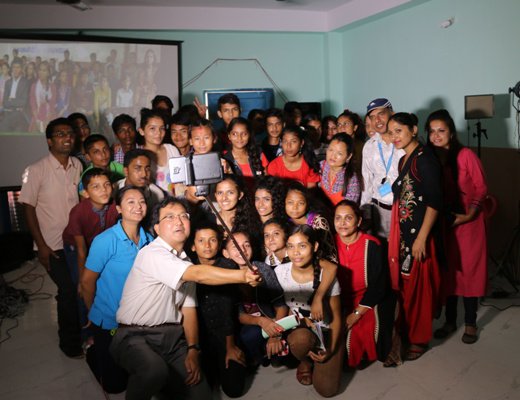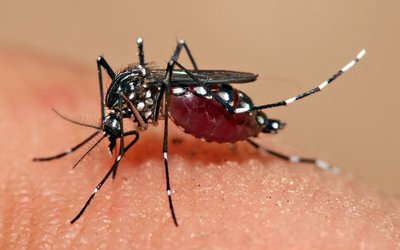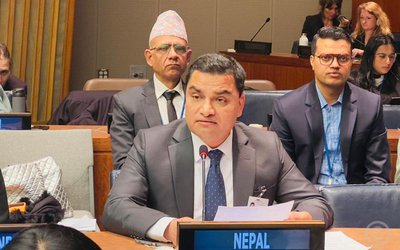
Children in Sunkhani, Dolakha and in Sunawal in Nawalparasi, 500 kilometres apart, talked to each other through e-interaction organised by UNICEF on October,1.
“Through video conferencing technology, the children were able to bridge the physical divide and exchange their experiences, and also have a bit of fun in the process. The experiences shared by the children in Sunkhani, some of them in lyrical format, dealt more with what they went through during and after the earthquakes of 25 April and 12 May 2015. Children from Sunawal on the other hand shared with their peers across the video screen their efforts in nurturing the child-friendly concept in the community to make their municipality Nepal’s first child-friendly municipality,” said a press release issued by UNICEF.
The e-interaction - “Sunkhani Dekhi Sunawal Samma” (Sunkhani to Sunwal)-- is the first of many experience sharing e-interactions that UNICEF will be conducting to connect children from districts affected by the 2015 earthquakes with children in other parts of the country which can potentially be affected by earthquakes in the future.
The exchange of information between the children from two sides, included the aftermath of the earthquake especially regarding safety of schools and the situation of health care; about issues regarding child labour; child marriage; about their villages; about festivals, and how they brought together diverse people.
Witnessing this innovative two-way interaction in Sunkhani was Mr. Bijaya Subedi, Under Secretary, Ministry of Federal Affairs and Local Development, who commented on vibrant discussion that took place amongst the children from two districts, taking into consideration, that half of them had been badly affected by the earthquake last year.
"This is the first event in the country that has connected children from two different places to share experiences of disaster, " said Mr. Subedi. " Our Ministry and UNICEF have agreed to use this kind of innovative and young-people friendly technology to create a platform for children to discuss issues that concern them, and to ensure their active participation."
In Sunawal Maiya Kadel, Child Friendly Local Governance Focal Desk Officer in MoFALD and Tomoo Hozumi, UNICEF Representative to Nepal observed the e-interaction. They watched the boys and girls talk about serious issues, peppered with zesty songs and poems, and then the quest to seek how they could continue their newfound e-friendship across the miles.
"Children were hit hard by the earthquake but their amazing resilience capacity helped them recover from the effects of the earthquake,” remarked Tomoo Hozumi, UNICEF Nepal Representative. "Examples on how they coped right after the earthquake in terms of education, child protection, WASH, shelter and health are learnings for children in other parts of country."
As a part of UNICEF’s ongoing work on building resilience and capacities of communities to better prepare and respond to future emergencies, UNICEF has already started to take the lessons learnt from the earthquake districts to other areas of the country through different programme components. This two-way, innovative communication initiative through video-conferencing technology is a cost-effective way of children in the earthquake affected districts to share their experiences with children in other districts.
"Such exchange will not only help children from different parts of the country to learn about disaster risk reduction, but will also foster better understanding amongst them of the diversity of the country, their challenges as well as their possibilities, " said Hozumi. "Interlinking child-friendly local governance and disaster risk reduction we should be able to ensure that all the service facilities associated with children, including schools, houses, hospitals should be child-friendly , and safe from disasters. Safety of children is key. "
In November, UNICEF will conduct the second e-interaction event when children from Barpak, Gorkha, the epicentre of the April 25 earthquake will be connected with children in Bajura District in the far west.
The e-interaction were backstopped with technical support from Changa Foundation and Meeting Point.
- MELAMCHI WATER SUPPLY: No Interruption During Monsoon
- Jun 25, 2025
- KOREAN RETURNEES: Successful Integration
- Jun 25, 2025
- UPPER TRISHULI-1: Engaging With Local
- Jun 25, 2025
- IME GROUP: Twenty Five Years Of Journey
- Jun 24, 2025
- NEPAL’S AIR POLLUTION: A Growing Health Concern
- Jun 24, 2025














